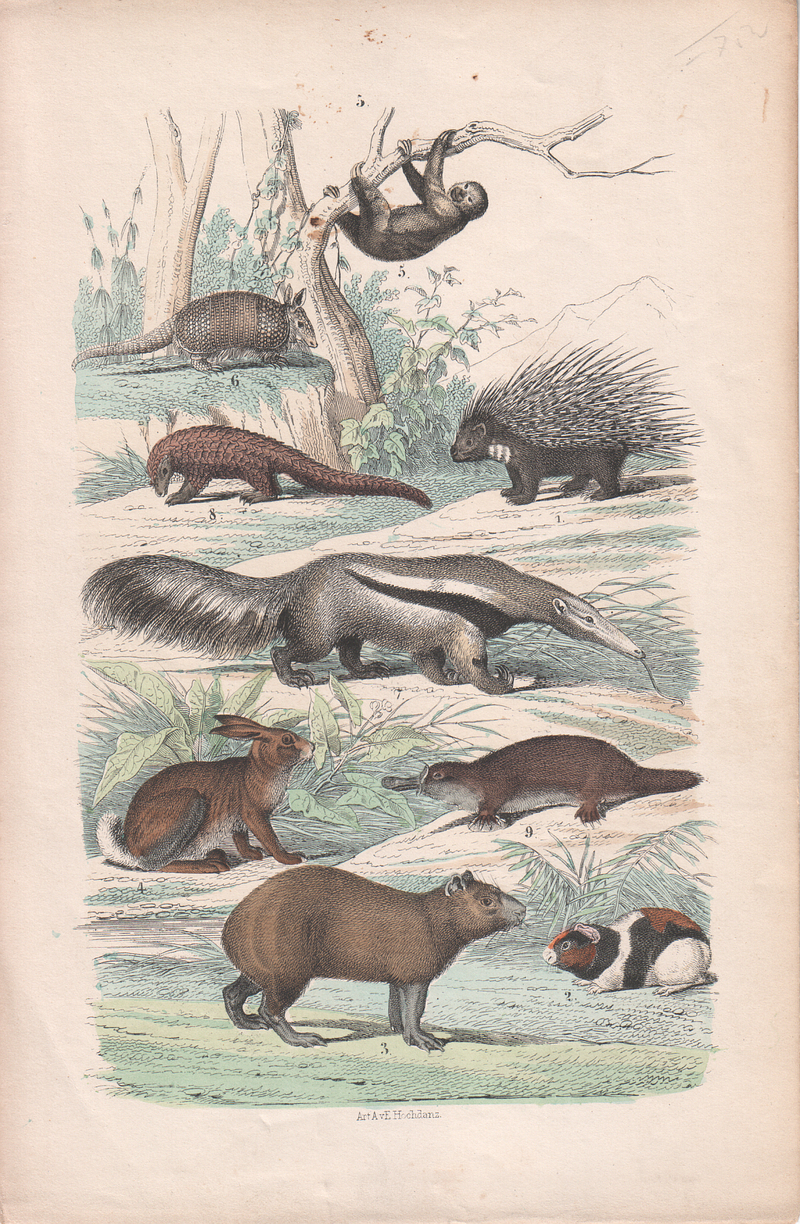| Description |
|
guinea pig (Cavia porcellus), three-toed sloth, nine-banded armadillo (Dasypus novemcinctus), giant anteater (Myrmecophaga tridactyla), ground pangolin (Smutsia temminckii), duck-billed platypus (Ornithorhynchus anatinus) Deutsch: Verschiedene Säugetiere.
1. Hystricidae = porcupine
2. Mesocricetus auratus = guinea pig (Cavia porcellus)
3. Dasyprocta = common agouti (Dasyprocta sp.)
4. Leporidae = hare
5. Folivora = three-toed sloth (Bradypus sp.)
6. Dasypodidae = nine-banded armadillo (Dasypus novemcinctus)
7. Myrmecophagidae = giant anteater (Myrmecophaga tridactyla)
8. Manis = ground pangolin (Smutsia temminckii)
9. Ornithorhynchus anatinus = platypus
Date Unknown
Source Collection Kuhn
Author Emil Hochdanz (1816-1885)
Source: https://commons.wikimedia.org/wiki/File:Mammals_-_S%C3%A4ugetiere,_Emil_Hochdanz_(5).jpg
The guinea pig (Cavia porcellus), also known as the cavy or domestic guinea pig, or cuy for livestock breeds, is a species of rodent belonging to the family Caviidae.
The nine-banded armadillo (Dasypus novemcinctus), or the long-nosed armadillo, is a medium-sized mammal found in North, Central, and South America, making it the most widespread of the armadillos.
The giant anteater (Myrmecophaga tridactyla), also known as the ant bear, is a large insectivorous mammal native to Central and South America.
The ground pangolin (Smutsia temminckii), also known as Temminck's pangolin or the Cape pangolin, is one of four species of pangolins which can be found in Africa, and the only one in southern and eastern Africa.
The platypus or duck-billed platypus (Ornithorhynchus anatinus) is a semiaquatic egg-laying mammal endemic to eastern Australia, including Tasmania. It is one of the extant species of monotremes, the only mammals that lay eggs instead of giving birth.
|
